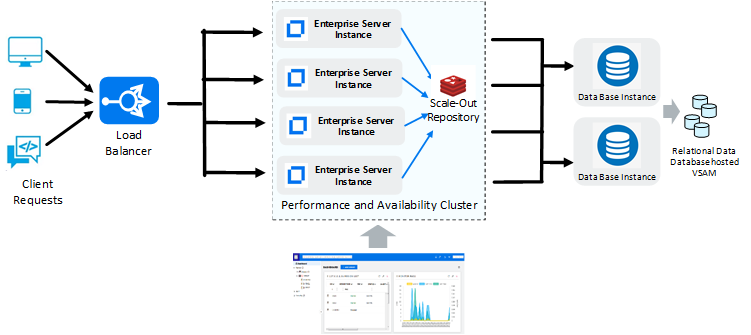Performance and Availability Clusters Rationale
Enterprise server instances, also referred to as regions, are typically deployed in a scale-up configuration. Capacity is increased by adding or replacing hardware components such as cores/vCPUs. Increasing the number of cores/vCPU increases overall capacity but scaling is not linear.
A Performance and Availability Cluster (PAC) enables you to configure regions in a scale-out architecture. In a PAC, multiple regions work together as a single logical entity, improving the linearity of capacity scaling. A PAC that utilizes distributed regions improves resilience to hardware or network issues. Therefore, the region is no longer a SPOF, improving the availability of the configuration.
User and system data files can also be a SPOF. Files can be replicated across drives for improved resilience. VSAM and transactional file updates are made up of multiple physical file input/output operations. If an issue occurs which prevents a file operation completing, then the file can be corrupted, and the replication process will propagate the corrupted file. For improved availability and scaling, files can now be managed and stored in an RDBMS.
